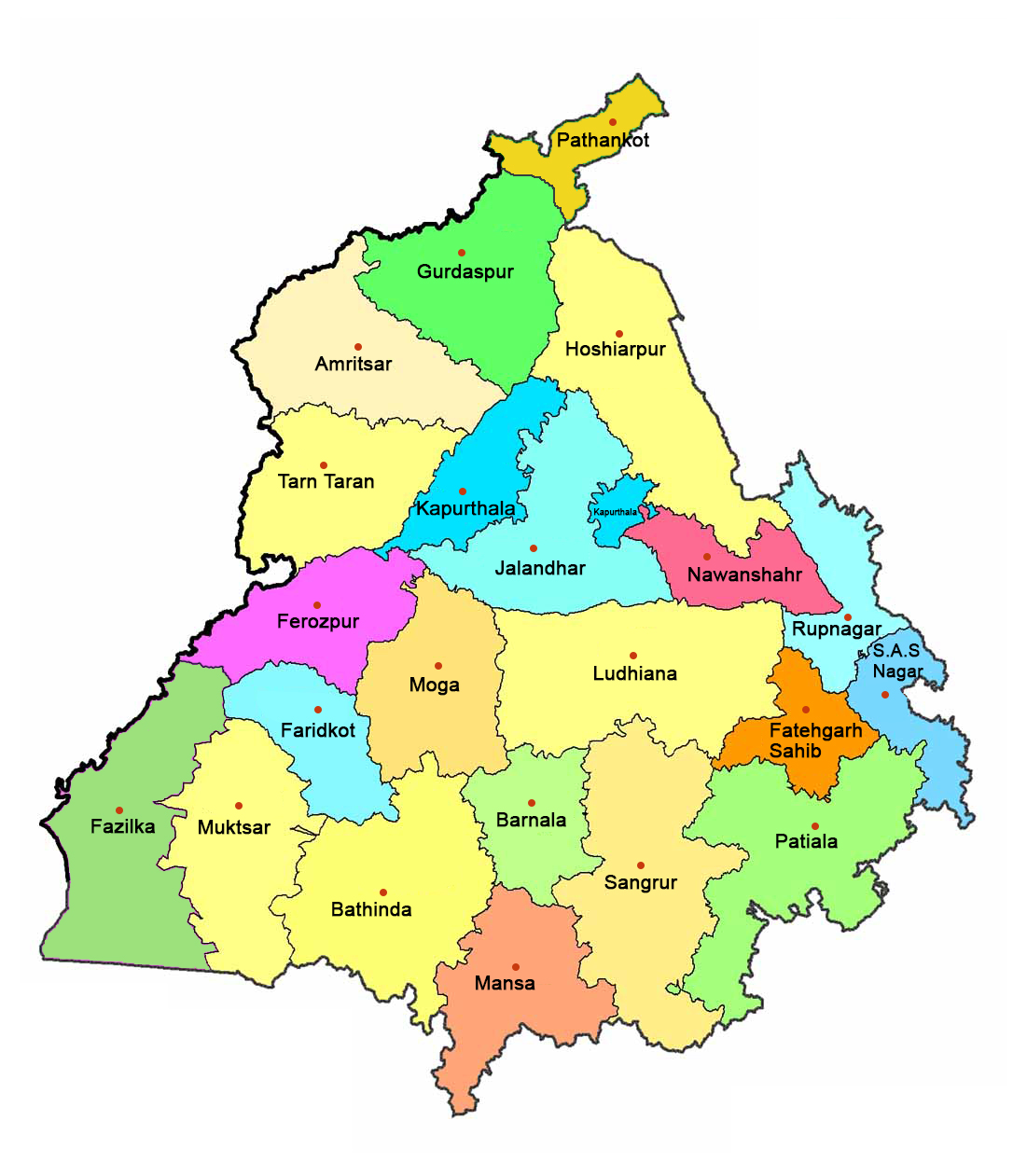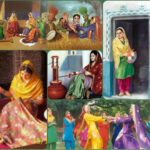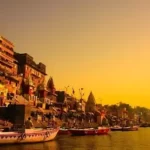Punjab, a region in South Asia, is known for its rich history, vibrant culture, and agricultural significance. It is divided into four geographical regions: Majha, Malwa, Doaba, and Powadh. Each region has its unique characteristics, traditions, and historical importance. This essay will explore interesting facts about these four regions of Punjab.
Majha
Majha, which translates to “heartland” in Gurmukhi and Shahmukhi, respectively, is a territory in the middle of the ancient Punjab area that is now divided between India and Pakistan. It stretches north from the right bank of the Beas River and reaches the Jhelum River. The demonym “Mjh” or “Majhail” is used to refer to residents of the Majha area. The Majhi dialect, which serves as the foundation for the Punjabi language’s standard register, is spoken by the majority of the area’s population. On the Pakistani side of the border, Lahore, and the Indian side, Amritsar are the two most populated cities in the region.
- Majha is the central region of Punjab, and its name translates to “the land in the middle.”
- It is the birthplace of Sikhism, with the city of Amritsar being the spiritual and cultural center for Sikhs worldwide. The Golden Temple, a sacred Sikh shrine, is located in Amritsar.
- Majha is known for its agricultural productivity, with fertile soil supporting the cultivation of wheat, rice, and other crops.
- It has significant historical importance as it witnessed many battles and conflicts throughout history. The city of Amritsar was a site of several historical events, including the Jallianwala Bagh massacre in 1919.
Malwa
Indian plateau area is known as the Malwa Plateau. It is bordered to the north by the Madhya Bharat Plateau and Bundelkhand Upland, to the east and south by the Vindhya Range, and to the west by the Gujarat Plains. The plateau, which is of volcanic origin, spans southeast Rajasthan state and central Madhya Pradesh state. The Sanskrit word malav, which is a portion of Lakshmi’s dwelling (the goddess of riches), is where the name Malwa originates.
- Malwa is the largest region of Punjab, located in the southern part of the state.
- It is known for its historic cities, including Ludhiana, Patiala, and Bathinda.
- Malwa has a rich cultural heritage and is renowned for its folk music and dance forms like Bhangra and Giddha.
- The region has a strong agricultural base, with a focus on cotton, wheat, and sugarcane cultivation.
- Malwa has several historical forts, palaces, and religious sites, showcasing the region’s architectural splendor and historical significance.
Doaba
The area of Punjab, India, between the Beas River and the Sutlej River, is known as Doaba, sometimes known as Bist Doab or the Jalandhar Doab. The demonym “Doabia” is applied to the locals. “Doabi” refers to the Doaba dialect of Punjabi. The word “Doaba” or “Doab” comes from the Persian ” ” (do b “two water”), which means “land of two rivers.”Doaba is divided from the southern Malwa area by the Sutlej River and from the northern Majha region by the Beas River.
- Doaba is the region located between the rivers Beas and Sutlej.
- It is known as the “Heart of Punjab” due to its central location and fertile land.
- Doaba is a land of diversity, with a mix of Punjabi, Hindu, and Sikh communities residing in the region.
- The area is famous for its educational institutions, with cities like Jalandhar and Hoshiarpur being prominent educational hubs.
- Doaba’s agricultural practices primarily focus on the cultivation of wheat, rice, sugarcane, and vegetables.
Powadh
Between the Satluj and Ghaggar rivers is an area of Punjab and parts of Haryana known as Powadh (also Puadh or Powadha). Powadhi is the region that Rupnagar borders to the south, southeast, and east with Ambala District (Haryana). The Powadh stretches to the Ghaggar River in the east, which divides the states of Punjab and Haryana from that portion of the Rupnagar District that is located close to Satluj. Powadh also includes portions of the districts of Fatehgarh Sahib and Patiala, such as Rajpura. In the current Punjab and Haryana, the language is widely spoken.
- Powadh, also known as the “Granary of Punjab,” is the region located in the southwest part of Punjab.
- The region is primarily known for its agricultural productivity and is a major contributor to Punjab’s food grain production.
- Powadh is renowned for its citrus fruits, especially kinnow (a variety of mandarin oranges).
- The area has several historical sites and shrines, including the Dera Baba Nanak, a prominent Sikh pilgrimage site.
- Powadh has a distinct cultural identity, with its own folk music and dance forms, reflecting the region’s vibrant traditions.
Overall, these four regions of Punjab contribute to the diverse tapestry of Punjab’s cultural heritage, history, and economic significance. While each region has its distinct characteristics, they all share the common thread of agricultural prosperity, religious diversity, and a strong sense of cultural pride. Exploring the unique features of Majha, Malwa, Doaba, and Powadh provides a deeper understanding of the multifaceted nature of Punjab and its people.








